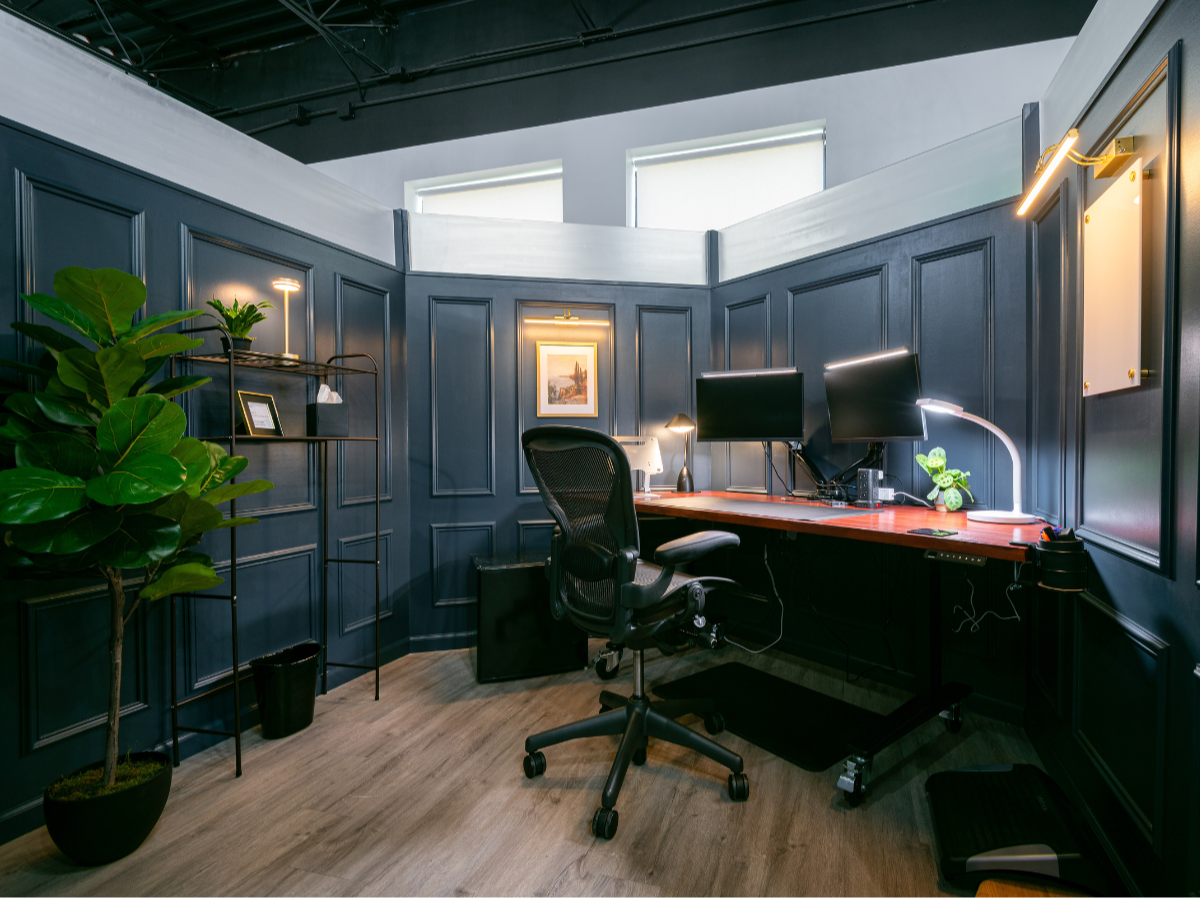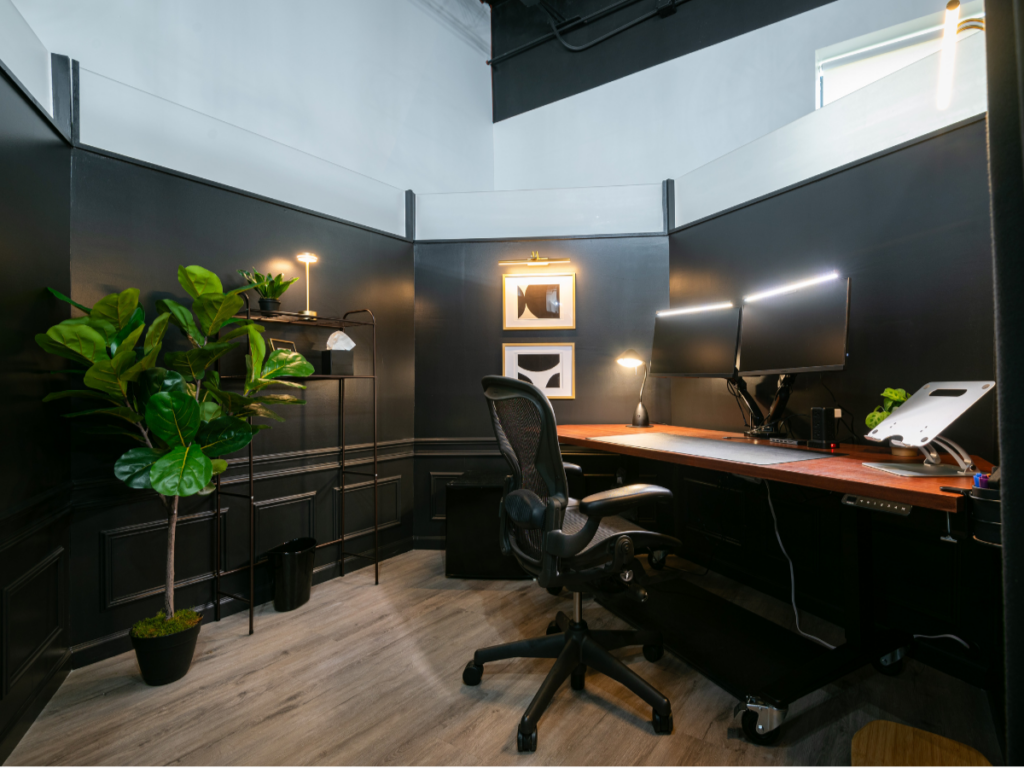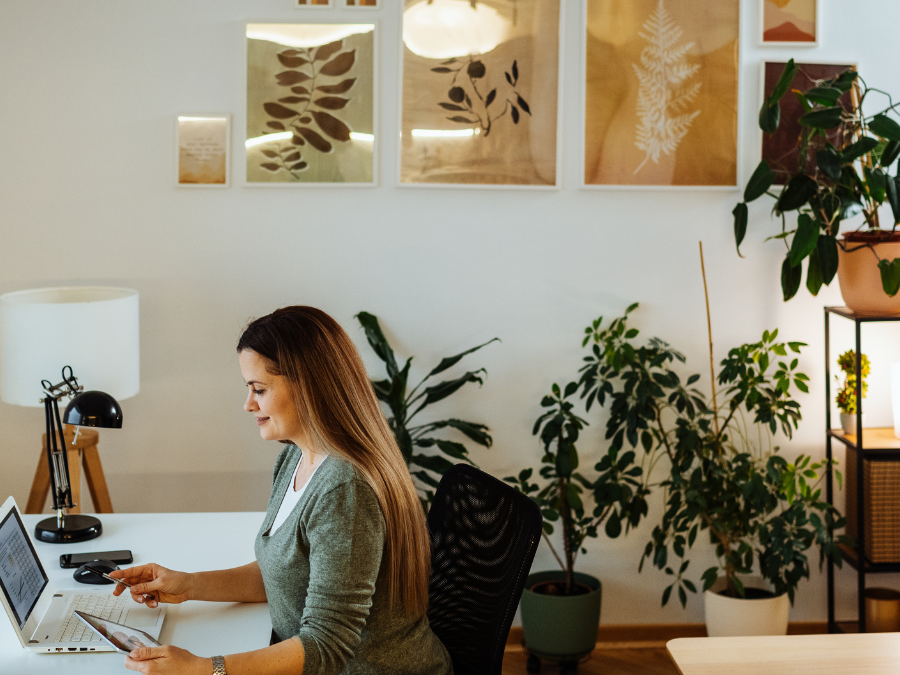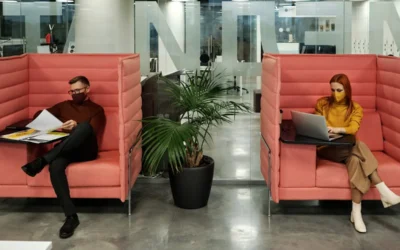The importance of office design in fostering productivity and creativity cannot be overstated. Smart office design plays an essential role in not only shaping how we work but also improving how well we work.
It not only impacts practical aspects like workflow and communication but also influences less visible but equally significant factors such as people’s mood, motivation, and even mental wellness.

On the Components of Smart Office Design
A well-considered smart office design strategy is not about mismatched adornments or unplanned positioning of workstations. It is a harmonious blend of aesthetics and function, where every element works together to create an environment conducive to productivity and innovation.
A smart office design considers office spatial layout but delves deeper into other aspects of the working environment. This includes ensuring effective ergonomics, seamless technology integration, suitable acoustics, and lighting setups that boost energy levels and focus.
The Impact of Smart Office Design
First and foremost, a well-designed office improves productivity. A workspace that welcomes natural light minimizes noise and promotes comfortable seating can work wonders on the concentration levels of your employees, thus increasing output.
Moreover, a thoughtfully designed office can stimulate creativity and innovative thinking. Elements such as breakout spaces, informal meeting areas, and creatively designed common spaces can promote rapport among employees and make room for idea-sharing.
Studies show that smart design significantly reduces work-related stress. A favorable workspace layout and comfortable furniture that supports good posture can lessen physical discomfort and, thereby, the stress associated with it.
Lastly, an excellent office design contributes to achieving a better work-life balance. A workspace designed with employees’ well-being in mind can also include versatile spaces for relaxation, ensuring that your personnel feel valued.

Implementing Smart Office Design
Transforming your office into a productivity powerhouse requires careful planning. Start by evaluating your current workspace – its layout, furniture, and available technology. You might consider using a virtual space designer tool to help with this assessment.
Prioritize good ergonomics and invest in chairs and desks that support this. Good posture significantly impacts the productive output of an individual, making this an essential step.
Next, evaluate your lighting conditions. As discussed in a previous article, An Ergonomic Workspace: The Impact of Intentional Design, optimizing your workspace’s lighting can drastically improve concentration and productivity.
Finally, consider adding elements that reflect your brand’s mission and culture to the office design. This could range from company logos on walls to common spaces designed around the company’s values. These subtle elements personalize your office, making employees feel more connected to the workspace.
In Conclusion
Smart office design is an underutilized tool that can significantly elevate the way your office operates. By optimizing ergonomics and technology, prioritizing employee comfort and well-being, and creating an environment that reflects your brand, you’re setting your office up for success.
After all, creating a workspace that’s a haven for introverted personalities doesn’t have to be a daunting task. Embrace the revolutionary spirit of smart office design today, and start experiencing the difference.



